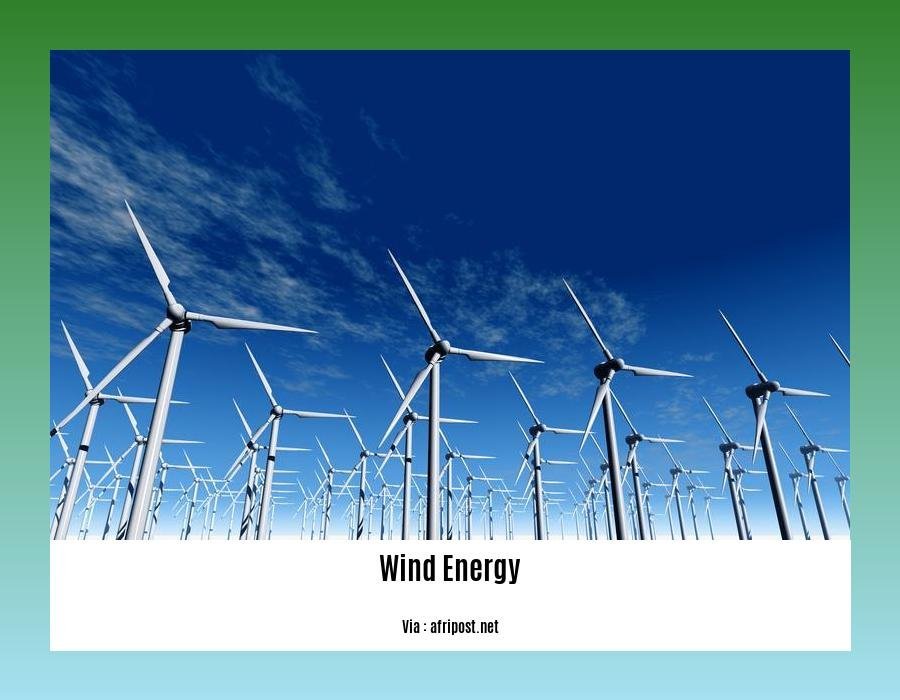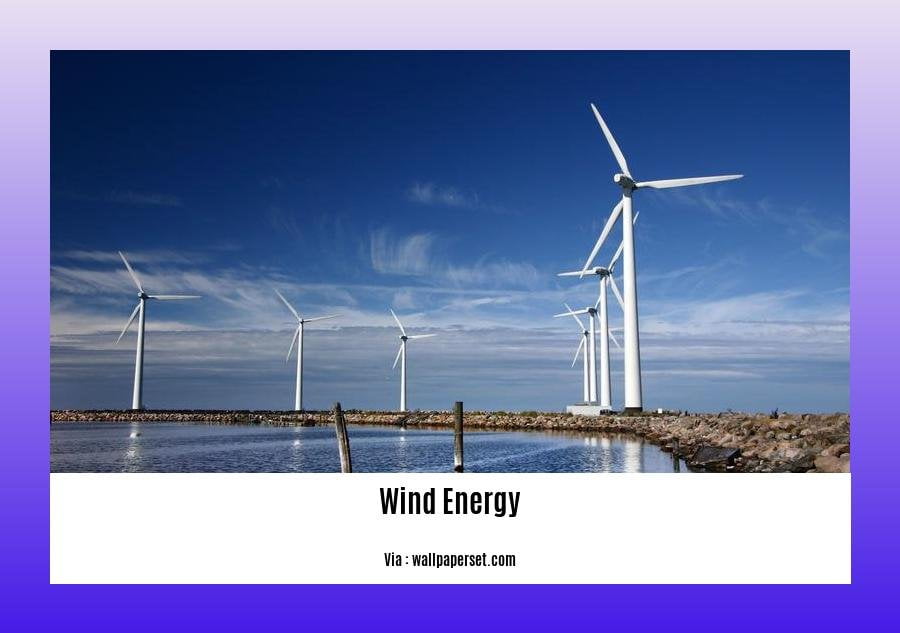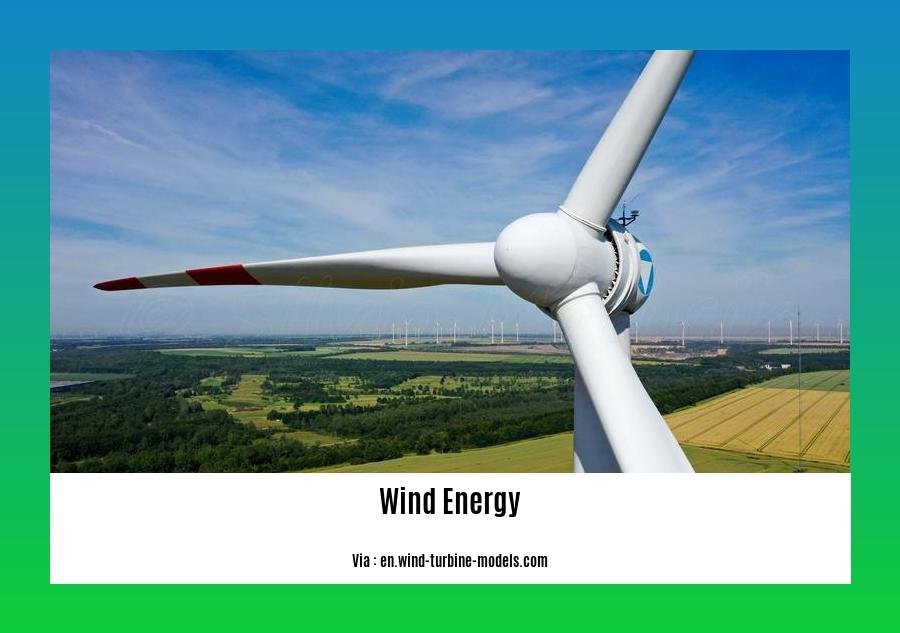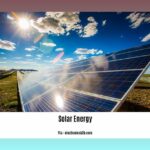Harnessing the Breezes: Exploring Practical Examples of Wind Energy in Everyday Life
Renewable energy has become an increasingly important topic in today’s world, and wind power stands out as a prominent player in this sustainable movement. While the sight of towering wind turbines may be familiar, the practical applications of wind energy extend far beyond generating electricity. From innovative architectural designs to powering agricultural operations, the integration of wind energy in everyday life offers a myriad of practical examples that showcase its transformative potential. In this article, we will delve into a range of real-world scenarios where wind energy plays a vital role, illustrating how its harnessing of the breezes is shaping a more sustainable future for us all.
Key Takeaways:
- Wind energy is an abundant and renewable source of power that can be harnessed in various ways.
- Some practical examples of wind energy in everyday life include generating electricity, milling grain, pumping water, powering cargo ships via kites, and reducing carbon footprint.
- Wind turbines are commonly used to generate electricity by harnessing the power of the wind to rotate and generate mechanical energy, which is then converted into electricity.
- Windmills have been traditionally used for centuries to grind grain into flour by harnessing the power of the wind to rotate large millstones.
- Wind energy can also be used to pump water from wells and other water sources, particularly in rural areas with limited access to electricity or other power sources.
- Wind energy is being explored as a potential source of power for cargo ships, where kites can be used to harness wind energy and propel the ships, reducing reliance on traditional fuel sources and decreasing carbon emissions.
- Wind energy plays a crucial role in reducing our carbon footprint, as it is a clean source of power that does not emit greenhouse gases or other pollutants.
- In addition to practical uses, wind energy can also be enjoyed in recreational activities such as sailing, windsurfing, and land surfing, providing an exhilarating and eco-friendly way to enjoy outdoor activities.
- Wind energy offers immense potential as a sustainable and renewable power source for a greener future.
Examples of Wind Energy in Everyday Life

Wind Energy for Electricity Generation
Wind energy is a remarkable resource that can be harnessed to generate electricity. Through the use of wind turbines, we can tap into the power of the wind and convert it into mechanical energy, which is then transformed into electricity. These towering structures, equipped with large blades, rotate when the wind blows, generating renewable energy that can power homes, businesses, and entire communities. The examples of wind energy in everyday life are all around us, from the wind farms sprawled across the countryside to the individual wind turbines adorning rooftops or fields.
Wind Energy for Milling Grain
Wind energy has been utilized for centuries in the age-old practice of milling grain. Traditional windmills were ingeniously designed to harness the force of the wind, allowing large millstones to grind grains into flour. Even in today’s modern world, you can still find windmills in some areas that continue to produce flour using wind energy. This sustainable and eco-friendly method not only preserves our traditions but also reminds us of the power of nature in our daily lives.
Wind Energy for Pumping Water
Furthermore, wind energy has played a vital role in pumping water, particularly in areas where access to electricity or other power sources is limited. In the past, windmills were commonly used to extract water from wells and other water sources by using the wind’s energy to lift the water through a system of gears and pistons. Even today, you may come across wind-powered water pumps in remote regions, where the gentle breezes provide an invaluable source of power.
Wind Energy in Ships and Reducing Carbon Footprint
In recent years, wind energy has been explored for its potential in transforming the maritime industry. Through innovative techniques, such as employing kites to harness the power of the wind, cargo ships can now reduce their reliance on traditional fuel sources. By integrating wind energy into their propulsion systems, these ships can significantly decrease carbon emissions, contributing to a greener and more sustainable future.
Wind Energy in Sports and Recreation
Wind energy not only serves practical purposes but also adds excitement and enjoyment to various recreational activities. From sailing across open waters to windsurfing and land surfing, the power of the wind propels adventurous individuals, providing exhilarating experiences while treading lightly on our planet. These sports and recreational activities demonstrate the versatility and harmonious integration of wind energy into our everyday lives.
Wind Energy and a Greener Future
In conclusion, wind energy symbolizes our commitment to a greener and more sustainable future. The examples of wind energy in everyday life showcase its versatility and potential in various aspects of our society. From generating electricity to milling grain, pumping water, propelling ships, and fueling recreational activities, wind energy offers practical and environmentally friendly solutions. By embracing wind energy and further exploring its potential, we can reduce our dependence on fossil fuels, minimize our carbon footprint, and forge a path towards a cleaner and more sustainable world for future generations.
| Pros of Wind Energy | Cons of Wind Energy |
|---|---|
| Clean and renewable | Visual impact of wind turbines |
| Reduces reliance on fossil fuels | Potential harm to birds or bats |
| Acts as a source of local economic growth | Noise pollution in certain cases |
Note: The pros and cons table is for informational purposes only and should be assessed based on individual circumstances and local considerations.
The effects of land pollution in Zimbabwe are devastating. To learn more about the environmental impact and consequences, click here: effects of land pollution in Zimbabwe
Discover the numerous everyday life uses of solar energy that can greatly benefit both you and the environment. Explore the possibilities here: everyday life uses of solar energy
Wind Energy in Transportation and Vehicles
Wind energy is a powerful force that has been harnessed for centuries, offering a clean and renewable solution to various aspects of our everyday lives. One area where wind energy has made a significant impact is in transportation and vehicles. By utilizing the power of the wind, we can reduce our reliance on traditional fuel sources and move towards a greener future. Let’s explore some practical examples of wind energy in transportation and vehicles.
Sailboats: Harnessing the Wind’s Power
In the early days of wind power, sailboats were one of the earliest forms of transportation to utilize the energy of the wind. By capturing the force of the breeze in their sails, sailboats could propel themselves across the water without the need for fuel. This ancient application of wind power not only reduced the cost of energy but also minimized the environmental vulnerability of the transportation sector. Imagine the elegance of a sailboat gliding through the water, propelled solely by the power of the wind.
Wind-Powered Pumps: Providing Clean Water
Another example of wind energy in transportation and vehicles is the use of wind-powered pumps. Historically, wind energy played a crucial role in pumping water for various purposes, such as agriculture and trading. Today, wind energy can still be harnessed to pump water in remote areas or for irrigation purposes. By using wind power instead of traditional power sources, we can provide a sustainable solution that conserves energy and reduces our reliance on fossil fuels.
Windmills: Milling Grain and Generating Electricity
Windmills have been a staple in many landscapes for centuries. They were initially used to mill grain and produce flour, providing a vital resource for communities. Today, windmills continue to contribute to reducing our carbon footprint by generating electricity. These large structures harness the power of the wind, spinning their blades to generate energy without burning fuel or polluting the air. Windmills offer a sustainable and environmentally friendly alternative to traditional power generation methods.
Wind Turbines: Power Generation
When we think of wind power, wind turbines often come to mind. These majestic structures dot landscapes around the world, generating clean and renewable energy. The turbine blades capture the energy of the wind, converting it into mechanical power, which is then transformed into electricity. Wind power generation has become a common and efficient use of wind energy. By harnessing the power of the wind, we can produce electricity without burning fossil fuels or releasing harmful emissions.
Wind Energy in Sports: Fun and Sustainable
Wind energy is not just limited to practical applications; it can also bring excitement and enjoyment to sports and recreational activities. Kiteboarding, windsurfing, and sailing competitions all rely on harnessing the power of the wind to propel athletes and vehicles. These sports not only demonstrate the potential of wind energy but also promote its use in a fun and recreational context. Picture the thrill of gliding across the water or soaring through the air, carried by the gentle yet powerful force of the wind.
Wind Energy at Home: A Sustainable Solution
Wind energy can also be integrated into our homes to generate electricity. Residential wind turbines or small-scale wind farms provide households with a sustainable and reliable source of energy. By harnessing the power of the wind, homeowners can reduce their reliance on traditional power sources, lower their electricity bills, and contribute to a greener environment. Imagine powering your home with the gentle whispers of the wind, knowing that you’re making a positive impact on the planet.
Key Takeaways:

- Wind energy has been used throughout history and continues to play a significant role in transportation and vehicles.
- Sailboats were one of the earliest applications of wind power in transportation, harnessing the energy of the wind to propel themselves across the water.
- Wind-powered pumps offer a sustainable solution for pumping water, especially in remote areas or for irrigation purposes.
- Windmills are ancient examples of wind energy, used to mill grain in the past and now generating electricity to reduce the carbon footprint.
- Wind turbines have become synonymous with wind power generation, capturing the wind’s energy to produce clean and renewable electricity.
- Wind energy is also utilized in sports and recreational activities such as kiteboarding, windsurfing, and sailing, adding fun and excitement while promoting sustainability.
- Residential wind turbines or small-scale wind farms can provide homeowners with a sustainable and reliable source of energy, reducing their reliance on traditional power sources.
Sources:
1. Applying wind energy to the transportation sector
2. Wind energy applications and advancements
Wind Power Supporting Water and Wastewater Treatment
Harnessing the power of wind energy can revolutionize water and wastewater treatment systems, offering numerous benefits for sustainability and efficiency. Let’s explore some practical examples of how wind power supports water and wastewater treatment, addressing the pressing need for clean and accessible water resources.
Wind-Powered Desalination Plants: A Solution to Water Scarcity
One remarkable application of wind power in water management systems is through wind-powered desalination plants. These plants utilize the energy generated by wind turbines to convert seawater into freshwater, providing a solution to regions facing water scarcity, particularly in coastal areas. By harnessing the power of the wind, these desalination plants offer a sustainable and cost-effective method of obtaining freshwater resources, reducing the reliance on traditional water sources. [^1^]
Wind Energy for Irrigation Systems: Reducing Reliance on Fossil Fuels
In agricultural practices, wind energy plays a vital role in powering water pumping systems for irrigation. By utilizing wind turbines to pump water, farmers can reduce their reliance on fossil fuels or grid electricity, thereby minimizing carbon emissions. This sustainable approach not only benefits the environment but also provides a more cost-effective solution for agricultural irrigation. Wind-powered irrigation systems contribute to the sustainable and efficient use of water resources, ensuring a greener future for agriculture. [^1^]
Wind Turbines for Flood Management: Improving Water Management
Strategically placing wind turbines in flood-prone areas can significantly contribute to flood management and water conservation efforts. These turbines can help power drainage systems, aiding in flood management and mitigating the damage caused by flooding. By harnessing the energy of the wind, wind turbines can improve water management in flood-prone areas, offering a sustainable and environmentally friendly solution. [^1^]
Challenges and Opportunities
While wind energy provides substantial benefits for water and wastewater treatment, challenges arise in the end-of-life treatment of wind turbines. The composite materials used in their construction make recycling difficult, highlighting the need for improved recycling technologies. Additionally, many existing wind turbines are expected to reach their end of useful life between 2020 and 2030, calling for sustainable solutions for their repurposing or decommissioning. [^2^]
Key Takeaways:
- Wind-powered desalination plants utilize wind energy to convert seawater into freshwater, addressing water scarcity in coastal areas. [^1^]
- Wind energy powers irrigation systems, reducing reliance on fossil fuels in agriculture and promoting a more sustainable and cost-effective approach to water management. [^1^]
- Wind turbines strategically placed in flood-prone areas aid in flood management, improving water conservation and mitigating flood damage. [^1^]
- Challenges arise in the end-of-life treatment of wind turbines due to difficulties in recycling composite materials. Sustainable solutions for repurposing or decommissioning wind turbines are crucial. [^2^]
Sources:
- “Understanding the Role of Wind Turbines in Water Conservation and Management.” Energy5.com
- “Environmental Impact and Waste Recycling Technologies for Modern Wind Turbines.” Sage Journals
Innovative Uses of Wind Energy in Urban Areas
As the world continues to seek sustainable energy solutions, wind power has emerged as a key player in the renewable energy sector. While wind energy is commonly associated with large wind farms in rural areas, it also has innovative applications in urban environments. In this article, we will explore some exciting examples of how wind energy is being harnessed in urban areas to promote sustainability and reduce reliance on traditional power sources.
Wind Energy Systems in Urban Environments
Designing and implementing wind energy systems in urban areas present unique challenges and opportunities. Factors such as building height, surrounding structures, and wind flow patterns greatly influence the efficiency and effectiveness of urban wind energy systems. Researchers and engineers around the world are continuously developing innovative solutions to overcome these challenges and maximize the potential of wind power in cities.
Innovative Examples
1. Rooftop Wind Turbines
One of the most promising applications of wind energy in urban areas is the integration of wind turbines into building designs. Rooftop wind turbines can harness the power of the wind at higher altitudes, where wind flow is typically stronger and less obstructed by surrounding structures. These turbines can generate electricity to power the buildings they are installed on, reducing reliance on grid electricity and contributing to a greener urban environment.
2. Wind-Powered Streetlights
Another innovative use of wind energy in urban areas is the incorporation of wind-powered streetlights. Traditional streetlights rely on grid electricity, which can be costly and contribute to carbon emissions. By installing small-scale wind turbines on streetlight poles, cities can generate clean and renewable energy to power the lights. This reduces energy costs, promotes sustainability, and enhances the overall aesthetics of urban streetscapes.
3. Vertical Axis Wind Turbines
Vertical axis wind turbines (VAWTs) are a type of wind turbine that can be particularly suitable for urban environments. Unlike traditional horizontal axis wind turbines, VAWTs are designed to operate efficiently in areas with changing wind directions and lower wind speeds. Their compact size and unique design make them ideal for installation in urban settings where space is limited, such as rooftops or balconies.
4. Wind-Powered Water Management Systems
Wind energy can also play a vital role in water management systems in urban areas. Wind-powered desalination plants utilize wind energy to convert seawater into freshwater, providing a sustainable solution to water scarcity. Additionally, wind turbines can power water pumping systems used for irrigation, reducing the reliance on fossil fuels and grid electricity. By harnessing wind energy, cities can optimize their water management systems and contribute to a more sustainable future.
Key Takeaways:
- Wind energy systems in urban areas present unique challenges and opportunities.
- Rooftop wind turbines, wind-powered streetlights, and vertical axis wind turbines are innovative examples of harnessing wind energy in urban environments.
- Wind energy can be utilized in water management systems, including desalination plants and irrigation systems.
- These innovative uses of wind energy contribute to sustainability, reduce reliance on traditional power sources, and enhance the overall efficiency of urban areas.
Sources:
1. “Urban Wind: An Alternative for Sustainable Cities.” ResearchGate
2. “Wind Energy System for Buildings in an Urban Environment.” ScienceDirect
FAQ
Q1: What are some practical examples of wind energy in everyday life?
A1: Practical examples of wind energy in everyday life include generating electricity, milling grain, pumping water, powering cargo ships, and reducing carbon emissions. Wind turbines are commonly used to generate electricity, while windmills are utilized for milling grain. Wind energy can also be harnessed to pump water and propel cargo ships using kites. Overall, wind energy offers versatile applications that contribute to a greener and more sustainable future.
Q2: How is wind energy used for transportation?
A2: Wind energy has been used for transportation since ancient times. Sailboats were one of the earliest applications of wind power, allowing vehicles to utilize the wind’s power as a clean and renewable energy source. By harnessing the power of the wind, transportation vehicles can reduce energy costs and environmental vulnerability. This application of wind energy is still relevant today and promotes the use of clean energy in the transportation sector.
Q3: Can wind energy be used for water management systems?
A3: Yes, wind energy can be harnessed for water management systems. Wind-powered desalination plants use wind energy to convert seawater into freshwater, providing a solution to water scarcity, particularly in coastal areas. Wind energy can also power water pumping systems used for irrigation, reducing reliance on fossil fuels and grid electricity. Additionally, strategically placing wind turbines can help power drainage systems in flood-prone areas, aiding in flood management and improving water management practices.
Q4: How does wind energy contribute to reducing our carbon footprint?
A4: Wind energy plays a crucial role in reducing our carbon footprint because it is a clean and renewable power source. Unlike fossil fuel-based power sources, wind energy does not emit greenhouse gases or other pollutants that contribute to climate change. By utilizing wind energy for electricity generation and other applications, we can significantly reduce our dependence on fossil fuels and mitigate the impact of human activities on the environment.
Q5: How can wind energy benefit homeowners?
A5: Wind energy can benefit homeowners by providing a sustainable and reliable source of electricity. Residential wind turbines or small-scale wind farms can be installed to generate electricity for households. By harnessing the power of the wind, homeowners can reduce their reliance on traditional power sources, lower their electricity bills, and contribute to a greener environment. Wind energy offers a decentralized and renewable solution for homeowners looking to adopt sustainable energy practices.
- China II Review: Delicious Food & Speedy Service - April 17, 2025
- Understand Virginia’s Flag: History & Debate - April 17, 2025
- Explore Long Island’s Map: Unique Regions & Insights - April 17, 2025
















